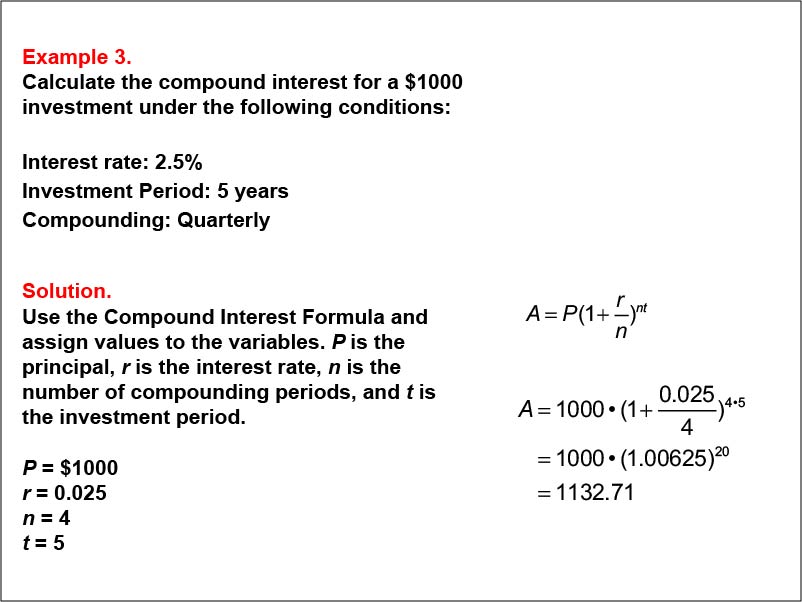
Display Title
Math Example--Math of Money--Compound Interest: Example 3
Display Title
Math Example--Math of Money--Compound Interest: Example 3

Topic
Math of Money
Description
This example demonstrates the calculation of compound interest for a $1000 investment at a 2.5% interest rate over 5 years, compounded quarterly. The formula A = P(1 + r/n)nt is used, where P = 1000, r = 0.025, n = 4, and t = 5. The resulting amount after 5 years is $1132.71.
Compound interest is a crucial concept in finance that illustrates how investments grow over time. By presenting examples with different compounding frequencies, students can observe how more frequent compounding leads to slightly higher returns. This collection of examples helps reinforce the concept and its practical applications in various financial scenarios.
Providing multiple worked-out examples is essential for students to fully grasp the concept of compound interest. It allows them to compare results, identify patterns, and understand the impact of changing variables such as compounding frequency. This approach enhances their analytical skills and prepares them for more complex financial calculations in real-world situations.
Teacher Script: "Let's explore what happens when we compound the interest quarterly. We'll use the same $1000 investment at 2.5% for 5 years, but now we'll compound every 3 months. Notice how this change affects the final amount compared to annual and semi-annual compounding."
For a complete collection of math examples related to Compound Interest click on this link: Math Examples: Compound Interest Collection.
| Common Core Standards | CCSS.MATH.CONTENT.7.RP.A.3, CCSS.MATH.CONTENT.HSF.LE.A.1, CCSS.MATH.CONTENT.HSF.IF.C.8.B |
|---|---|
| Grade Range | 8 - 12 |
| Curriculum Nodes |
Algebra • Exponential and Logarithmic Functions • Compound Interest |
| Copyright Year | 2013 |
| Keywords | interest, compound interest, math of money |